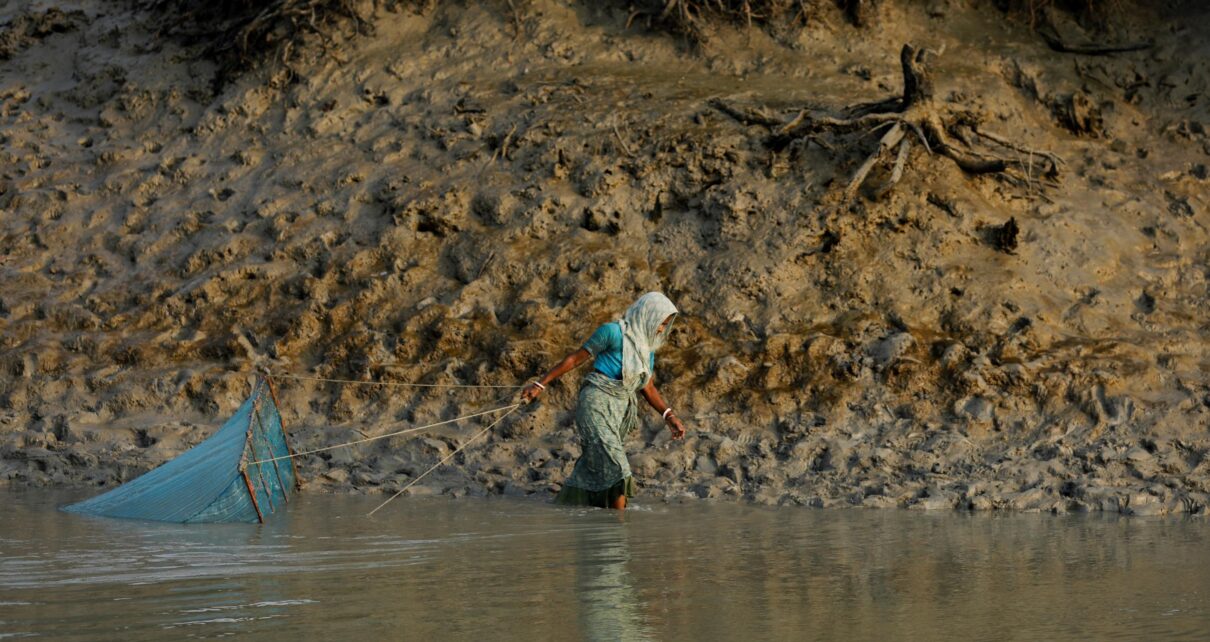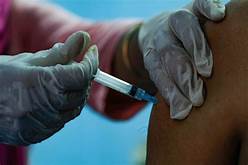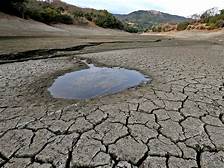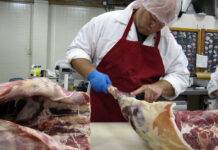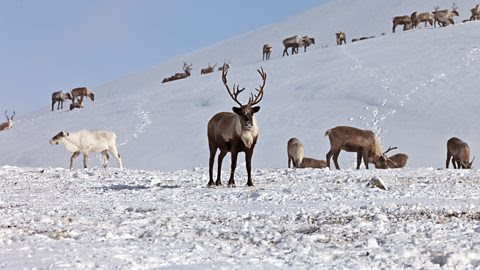
Climate change can result in the spread of infectious diseases such as anthrax (Credit: Getty Images)
As temperatures shift, animals move to different regions and pathogens have more opportunities to jump between hosts. Could the next pandemic be fuelled by an unstable climate?
When temperatures rise, everything changes and disease arrives. As the thick ice melts and the seas and the air warm, so new life arrives in Arctic waters. Minke, bottlenose, fin and sperm whales are heading north, even as grizzly bears, white-tailed deer, coyotes and other animals and birds expand their range into boreal forests to the south.
But the geography of disease is also changing as novel pathogens affecting plants, animals and humans increase their range. New beetles are heading north and devastating Siberian forests, Alaskan mammals are struggling as new ticks arrive and human habitations in northern Norway are infested by new insects.
This article is an extract from Fevered Planet: How Diseases Emerge When We Harm Nature, by the late John Vidal, who was former environment editor for The Guardian newspaper. He reported for The Guardian for nearly 30 years until his retirement in 2017. He died in October 2023. Fevered Planet was published by Bloomsbury Publishing in June 2023.
In Alaska, where winter warming has increased by nearly 4C in 60 years, the whole ecosystem is undergoing change. The sea ice is breaking up earlier than it used to, causing changes in the amount of phytoplankton – the minute organisms that drift around in water currents – at the bottom of the food chain. This has knock-on effects on fish and bird populations. Lakes are changing size, marine heat waves are becoming more frequent and more intense, and mammals must seek new food sources. The author Edward Struzik reports “a plethora of deadly and debilitating diseases” striking reindeer in Scandinavia and Russia, musk oxen on Banks and Victoria islands in Arctic Canada and polar bears and seals off the coast of Alaska. New pathogens are turning up everywhere. They may be strange pests in Malawian maize fields, a novel fungal infection appearing in the ear of a Japanese woman, an unidentified insect killing trees in Russia, or a new bacterium shrivelling the fruit of lemon trees in Florida.
I called Daniel Brooks, a bacteriologist at the Harold W Manter Laboratory of Parasitology at the University of Nebraska State Museum. He and his colleagues’ studies show that with global heating, pathogens are jumping more frequently from one host to another. He argues that climate will soon be fuelling pandemics and we can expect a succession of unpredictable human, animal and plant disease outbreaks. “We rarely have an idea where the next [pathogen] will pop up. All we know is that they are better at finding us than we have been [at] finding them.”
Brooks places climate change and disease in historical and ecological context. “When the climate is stable,” he says, “species tend to be isolated and specialised. But when it is volatile, as it is now becoming, environments change and this creates opportunities for new species to colonise and evolve. Throughout the past 15,000 years, advances in civilisation – agriculture, domestication, the flourishing of cities and globalisation – have all been accompanied by increasing disease risk. But never before has the human population been larger, living at such high densities and so hyperconnected. We are now approaching a storm of spiralling disease risks.”
Past pandemics, he says, largely arose at times of climate shifts that destabilised human populations and forced migration, famines and conflict. They then subsided with the return of climate stability. So long as climate change continues to stir up the biosphere, pathogens will continue to move between humans, farmed animals and wildlife. “The planet is a minefield of evolutionary accidents waiting to happen. Now we are in a period of accelerating climate activity, we should expect more emerging diseases. It is these emerging diseases, made more likely by climate change, which then exacerbate poverty, famine, drought, conflict and migration.”
Climate change, he emphasised, does not produce disease itself; rather, it is a “multiplier”, increasing and speeding up the threat of diseases emerging. When temperatures rise or fall, when the rains are heavier or a drought lasts longer, then the conditions for life change and the insects, bats or ticks that often carry the pathogens of diseases like malaria, Rift Valley fever, cholera and dengue are likely to move geographically.
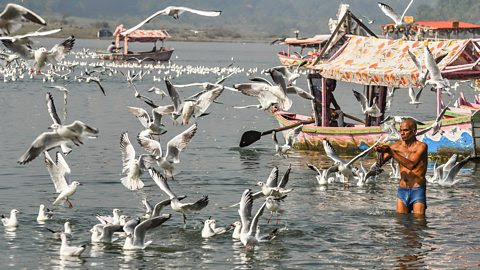
Climate change can shift the range of species, bringing them into closer contact with new populations (Credit: Getty Images)
Far from being linked definitively to a single host, as was thought for many years, Brooks and colleagues are showing that viruses and bacteria can and do switch hosts frequently, with the result that new diseases will inevitably emerge or old ones flare
up more easily with climate change. They suggest that we have a crisis of emerging infectious disease, with known pathogens becoming more dangerous than before, appearing somewhere new or infecting new hosts, changing both the movement of pathogens and the impact they have on humans and animals.
You might also like:
- How forest schools boost children’s immune systems
- The daring plan to save the Arctic with glass
- The surprising benefits of blue spaces
Other work suggests that climate and land use changes over the coming decades will together produce many new opportunities for viruses to jump between species and cross to humans. At the moment, says Colin Carlson at the Center for Global Health Science and Security and the Verena Institute at Georgetown University, some 10,000 virus species have the capacity to infect us, but the vast majority circulate silently and unrecognised in wild mammals. His models simulate how 3,139 species will share viruses and create new spillover risk hotspots. In the warmer, physically degraded world that we are creating, species will naturally converge in new combinations at high altitude, in places of high biodiversity and where human populations are concentrated, most likely in Asia and Africa. Mammals like bats will encounter other mammals for the first time, potentially sharing thousands of viruses. This ecological transition may already be underway, he says.
The implications of research like that of Brooks and Carlson are enormous, says Canadian-French ecologist Timothée Poisot. “It shows that there isn’t a ‘climate’ future and a ‘pandemics’ future, there’s just a future made of synergistic effects.”
Sign up to Future Earth
Sign up to the Future Earth newsletter to get essential climate news and hopeful developments in your inbox every Tuesday from Carl Nasman. This email is currently available to non-UK readers. In the UK? Sign up for newsletters here.
When it comes to warming, the ecological process goes roughly like this: the temperature rises, which affects rainfall and humidity, wind patterns and the amount of sunshine; this increases the severity of cyclones, floods, droughts and heatwaves, which in turn affect the survival, dispersal and reproduction of pathogens that are linked to outbreaks of cholera, typhoid, filariasis, leptospirosis, malaria, yellow fever and a host of other diseases.
Changes in a warming world are throwing up many medical surprises. In 2016, the far past returned to northern Russia with an anthrax outbreak that killed a 12-year-old boy and infected dozens of semi-nomadic reindeer herders and their animals. A heatwave with temperatures reaching unprecedented mid-30s Celsius (mid-90s Fahrenheit) had part-melted the permafrost and exposed a reindeer corpse that had died of the disease many years before and been buried barely a metre deep in the frozen ground. Ninety people were taken to hospital.
Until then, it had barely occurred to me that a warming climate might disinter dormant but still active pathogens. Viruses and bacteria can “live” for millennia when frozen, and no one has much idea what else may be entombed in icy soils and glaciers to be released with heating. We have not had long to wait for more evidence. In the past five years, the European Space Agency has found hundreds of ancient microorganisms resistant to antibiotics in the Alaskan permafrost, and Chinese hunters have isolated 33 ancient and previously unknown viruses dating back at least 11,000 years inside Tibetan glaciers and ice samples in Greenland and elsewhere. There will surely be many more similar discoveries.
—

